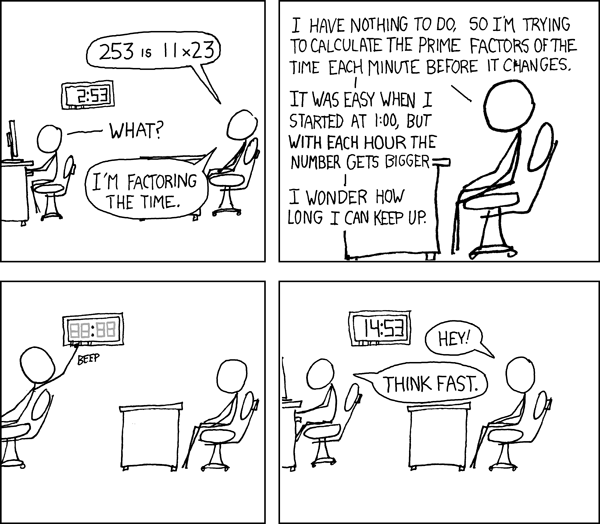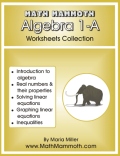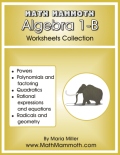The Case for Dual Wield Tanking (If you're looking for a rotation, go here)
I've decided to take a small plunge into the world of Death Knight tanking. In fact, this plunge is going to be a very pointed one. We all know that DK's can tank just fine, but I want to
dual wield tank. Yes, you heard me, DUAL WIELD. In addition, I want to be a frost dual wield tank. Why? Because it's atypical and fun for me. What more reason does one need?
I want to start by defining the scope of the article. I'm not trying to say DW tanking is better than other tanking, I'm merely making the case that it is
equally viable as a form of tanking
. Thus, please keep that in mind when reading. I'm not trying to disprove other methods of tanking, only trying to prove mine by association and comparison.
The whole concept of dual wield tanking has been taboo for some time. Ask any seasoned veteran elitist and they'll probably spout off some diatribe about the parry-haste mechanics on bosses. For those of you that don't know, this mechanic is that each time a boss parries one of your attacks, he gains a temporary haste for his attacks, meaning you take more damage. This is why we force melee to the back of bosses (so they don't contribute) and why expertise capping is a must.
Note that I didn't say hit capping there. Hit capping has NOTHING to do with the chance for a boss to parry you. That's all expertise, baby.
Anyways, at first I thought this was going to be an uphill battle, filled with complicated maths to be able to be respected by the otherwise skeptical tanking community. Luckily, Mr. Vick (nothing to do with dogfighting, I'm sure, unless he wants to roll a worgen) commented the other day about
a Tankspot discussion that debunks the theory that DW tanking for DK's is completely unviable. I went and found that discussion, read through the whole of it, and what follows now is my interpretation of the data and what it means for DW DK tanks everywhere.
First things first: the spec. With the new DW friendly talents that Blizz gave us in 3.2, it's very important to be sure you're specced correctly for any sort of dual wielding. This means basically for DW you
must get the following two talents: Nerves of Cold Steel and Threat of Thassarian. You can see if you'd like to click that my
8/53/10 spec reflects these. Additionally, I've taken many of the traditional frost tanking talents.
Now, I mentioned that I thought the DW part was going to be the harder sell. However, I think with the recent nerfs of the frost tree while buffing DW talents, it may in reality end up being the fact that I'm going to be a frost tank and not a blood or unholy tank. Still, while frost may be the least attractive at the moment, there is no obvious taboo on using it as your tank spec. Plenty of people still Frost tank with a 2H. Thus, I'm not going to try to justify the frost part here, this is mainly to address the issue of dual wielding. If you have a problem with frost, that's fine. Just don't give me crap about my DW.
Glyphs Secondly, it's important to note that I'm going with the following glyphs:
Then, I snatched up two
Teldrassil Protectors from the Argent Tournament, because these seemed like a good place to start for 1H tanking weapons. The fact that they have defense and parry is really good for a DK DW tank. Most 1h weapons may waste some points on block, which is obviously useless for us. The rest of my gear is your typical DK tanking fare.
These get me to around 535 defense, which is the heroic defense cap. I'd like to get to 540, which is the raiding defense cap, but I'll need to work on my gear a bit more to get there. I've maxxed out the enchants and such that I can use to help my gear.
Runeforging Finally, I headed to the runeforge to get my weapons to glow. I was a bit saddened when I learned I couldn't use Stoneskin Gargoyle to bump my defense some more (duh, it's only for 2h weapons), so I slapped one with
Swordbreaking and the other with
Spellbreaking. It may behoove me later to pick up an enchant for
Blade Ward, since from all reports this looks like a good one, especially for DW DK tanks (since we both hit more and rely more on our own parry).
Okay, so now on to the more mathy portion of this post, since I've covered the initial setup. I mentioned earlier about Expertise and Hit capping. For hit, with the Nerves of Cold Steel talent, we only need to gather a paltry 5% hit. "But wait!" you may say, "I thought DW imposed a penalty that means you need a whopping 27% hit in order not to miss." Yea, I say to you, that is indeed the case for
white noise hits. That is most certainly NOT the case for melee based special attacks, where we need 8% (minus the 3% from the talent gives us 5%). Now, we do gain some benefit by going higher, since we rely on spells and they don't cap until 17% (minus 3% gives us 14%)... but you really don't see as much of a threat/dps gain from hit after 8% than you do from stacking other important stats. If you can pick up more, fine, just don't sacrifice better stats for it.
Also, to quote myself from earlier: Hit capping has NOTHING to do with the chance for a boss to parry you.
Like I said, that's expertise. The number we need to shoot for there is 26 "skill" (not rating). This is the so-called Dodge Cap. The prolific Splug from the tankspot forums explained it pretty well and was venerated by his peers, so I'll quote him:
"Getting over the 6.5% dodge cap [26 skill] is very efficient for threat, and by that point the parry-haste contribution becomes overshadowed by the raw avoidance gains from dual wielding tanking weapons [Splug]."
Yes, therein lies our first right hook at the jaw of the DW parry-haste myth. You see, one of the benefits of dual wielding is an increased contribution by your extra weapons to avoidance in the form of more parrying. Thus, it is argued that at the dodge cap, your expertise is enough to minimize the amount the boss is parrying you, while granting you enough avoidance that you reach a tipping point where the boss mechanic is overshadowed by your avoidance. Yes, that is just a restatement of the quote above, but it is an important point not to miss. This is one big feather in our cap for the viability of DW tanking.
Now, we can get more expertise, which will further decrease our chance of being parried as well as help with threat generation, but once we get to this cap, we should again not sacrifice other essential stats. This is just another benchmark similar to hit capping that we want to hit prior to throwing ourselves out in LFG saying "hey, I can haz tank!"
Along this line, we need to remember that we'll be parrying a bit more ourselves with two weapons. The increase in parry for a dual wield tank is significant not only for avoidance, but also for threat generation. Remember, parry doesn't suffer from diminishing returns like many other stats, and DK's start out with more than our fair share of parries anyways.
What does this mean? Well, recall that DK tanks have an ability called
Rune Strike. This is the very cornerstone of DK tanking. Check it out via that link if you haven't heard of it. It is important to note that not only is it
high threat, but it is also activated every time we parry an incoming attack. Didn't we just say that a DW tank will be parrying a lot more do to having more parry and an extra weapon (more attacks)? Why yes, we did. Quite simply, this means we'll be doing more Rune Strikes than our 2H counterparts.
Let me assure you that Rune Strike seems to proc almost constantly when you DW tank. I just tried it this last weekend in a heroic, and was amazed at how often that button lit up. I basically had to press it between each spell/special cast. If you've read that tooltip or are familiar with the ability, you also know that Rune strike is both UN-parriable AND it replaces parriable white noise attacks. Thus, not only are we increasing threat generation by DW, but we're also decreasing that nasty parry-haste mechanic contribution even further.
If the above is not enough to convince you, lets put this in a little perspective. After all, a DW DK tank is probably still going to be parried more than a 2H DK tank, if we're comparing apples to apples. Let's bust out the oranges though! That is, lets look at another flavor of tanks: Warriors. They have to deal with the same parry-haste mechanic we do.
Again, it was done better in the tankspot forum discussion, so I'll quote the enlightening and math-centric Satorri (2S is two slow weapons, 2F is two fast weapons, 1S is one slow two-handed weapon, just FYI... warrior is your typical warrior tank):
"So let's adjust the table from above [which did not take into account replacing white attacks with Rune Strikes]:
#attacks #parries(no Exp) #parries(26 Exp) Warrior = 72 10.1 5.4 DK-2S = 58 8.1 4.4 DK-2F = 80 11.2 6.0 DK-1S = 31 4.3 2.3
So, notice now that while you will get more parriable swings, and more parries with dual wielding than a 2-h as a DK, DK's also start way ahead of the curve for parriable attacks, and in fact, dual wielding tank weapons can only marginally increase your risk of parry-haste over that of a warrior with the same Expertise. And after expertise we're nitpicking on half an actual parry (which is only relevant in a giant number statistical average) [Satorri]."
So what's the point here? Well, I haven't noticed any Warrior tanks being shunned from groups for parry-haste mechanics, nor has that mechanic been a particular problem for them. Yet, DW tanking for DK's is
on par with warrior tanking when it comes to the same mechanic. Sure, 2H DK tanking may be better from a very selective perspective, but DW tanking has it's own perks as well (more parries, more avoidance, more rune strikes... the threat may end up being a wash since you hit harder with 2H weapons, but more often with two weapons). Also, I'm not trying to answer the question of if DW tanking is
better, only if it's
viable. I'm trying to debunk the myth that DW tanking suffers from too much parry-haste. Clearly, I think I've shown that it is just that... a myth. So, to answer the question...
Is dual wield Death Knight tanking viable in the 3.2 World of Warcraft? My answer is an emphatic:
Yes.
(Edit: I tried to clean this up a bit to make it easier to browse. Also, if you're looking for more... I go into detail about my rotation and such things here.) maths is fun tanks










